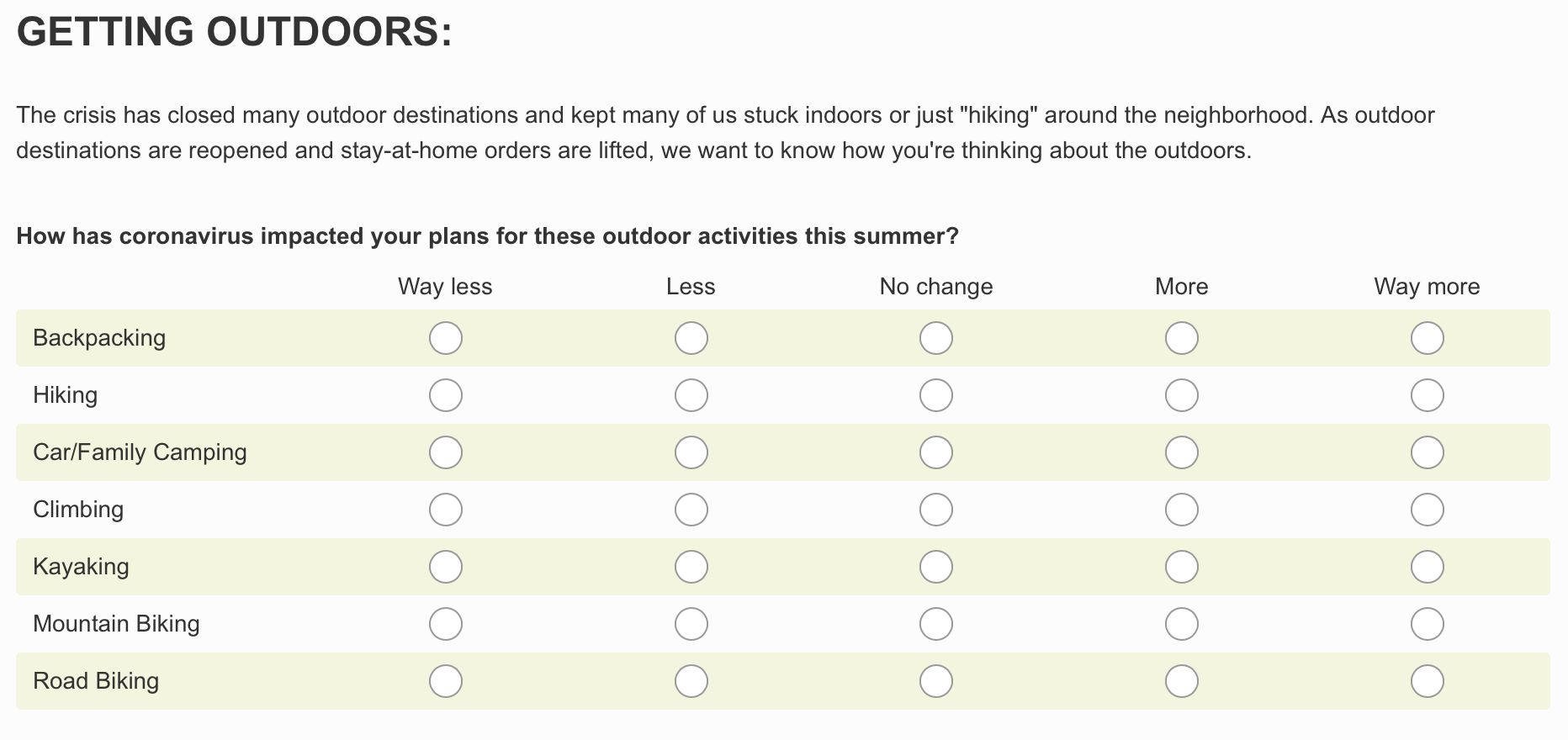Unfortunately, the proliferation of "free" survey platforms and survey tool integrations into apps like Constant Contact has led to excessive surveying and an abundance of poorly designed and poorly executed surveys.
A good example of this hit my inbox this week.
Sent by an outdoor goods retailer, the survey intended to get a finger on the pulse of their customers to better understand how the Coronavirus was affecting their outdoor plans this summer. They would likely use the results to help forecast sales in different categories and align messaging to be relevant to their customer's summer plans.
The survey set up and the message were on brand and they were generous with a $10 incentive for completing the short survey. A great start! Unfortunately, one of the first questions created what we describe as a survey speed bump. A question that slows down or stops the respondent as they work through the survey. These speed bumps are often the result of confusing, long-winded or otherwise poorly written questions and take focus away from the question at hand, and in some cases, cause people to drop the survey.
In this case, the survey did a nice job of setting up the question; it was straightforward and concise. The problem lay in the answer choices provided. (Example below)


